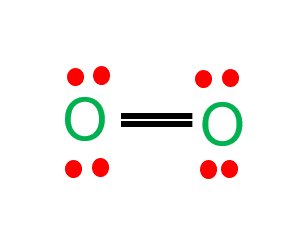Table of Contents
Density of Oxygen
The density (ρ) of oxygen (O2) is 1.428 g/L at a standard temperature and pressure. The molar mass of an oxygen (O) atom is 15.9996 grams per mole.
Density is defined by the mass-to-volume ratio of a substance and has units of [g/L], [kg/m3] or [lb/ft3].
Oxygen is a diatomic gas with a 180-degree bond angle. Many species require molecular oxygen to survive. Oxygen (compressed gas) is used in welding, metal cutting, and rocket engines. The density of oxygen in different commonly used units is given in the table below:
| The density of oxygen (STP) | 1.428 g/L |
| The density of oxygen in kg/m3 | 1.428 kg/m3 |
| The density of oxygen in lb/ft3 | 0.089 lb/ft3 |
One mole of a gas at STP (0°C and 1 atm) has a volume of 22.4 L. So if we have the molar mass of the gas, divide it by 22.4 to get the density of that gas. The molar mass of O2 gas = 32 g/mol.
Density = mass/volume
Density of oxygen = ( 32g/mol) / (22.4 L/mol) = 1.428 g/L
The density of gases varies with temperature. The higher the temperature, the more the molecules spread out, resulting in a lower density. As a result, warm gases rise and cool gases sink. However, the density of a gas is directly proportional to pressure. As pressure increases, with temperature constant, density also increases. Gases have a low density because the intermolecular force of attraction between the gas molecules is feeble. As a result, gas density is lower than that of solids or liquids.
Standard Temperature and Pressure (STP)
Due to the fact that temperature and air pressure vary by location, a common reference point is required for comparing the testing and documentation of chemical and physical processes. STP is frequently used to define standard temperature and pressure conditions, which are necessary for measuring and documenting chemical and physical processes. The IUPAC (International Union of Pure and Applied Chemistry) defines STP as air at 0 oC (273.15 K, 32 oF) and 105 pascals (1 bar).
Oxygen Properties
| Element | Oxygen |
| Phase at Room Temperature: | Gas |
| Atomic number | 8 |
| The molar mass of the oxygen molecule | 32 amu |
| Density | 1.429 g/litre |
| Electronic configuration | 1s22s22p4 |
| Oxidation state | −1, −2, +2 (in compounds with fluorine) |
Summary
- The oxygen density at STP is 1.42 g/L.
- The density of a gas is directly proportional to temperature and inversely proportional to pressure.
Related Topics
O2 Lewis Structure & Molecular Geometry
How many electrons does oxygen have?
O3 Lewis Structure | Step By Step Drawing
Density of Water in g/ml-Accurate Value
Frequently Asked Questions
1. What is the oxygen formula?
The oxygen formula is O2. Oxygen is a diatomic, colorless, odorless, and tasteless gas with a 180-degree bond angle. The oxygen formula comprises two oxygen atoms connected in a pair.
2. What is the density of oxygen?
AT STP, the density of oxygen (O2) is 1.428 g/L which is equal to 1.429 kg/m3 or 0.0267 lb/ft3.
3. What is silicon’s atomic number and mass?
Silicon has the atomic symbol Si, atomic number 14, and atomic weight [28.084; 28.086].
Check the full article “Silicon mass number”.
4. Where is thermal diffusivity used?
Thermal diffusivity is a critical concept in the heat transmission process. Thermal diffusivity is the rate at which temperature spreads across a substance. It is a method of measuring heat transfer in a material. It measures the heat transfer from heat to cold material.
5. What is liquid nitrogen used for?
Liquid nitrogen, with a boiling point of -196 degrees Celsius, is used for a number of purposes, including computer cooling, medicine to remove undesirable skin, warts, and pre-cancerous cells, and cryogenics, which studies the effect of very cold temperatures on materials. Check the full article “How cold is the liquid nitrogen”.
More Links
- BCl3 Lewis Structure in four simple steps - November 1, 2023
- PH3 Lewis Structure in four simple steps - October 8, 2023
- PF3 Lewis structure in four simple steps - September 24, 2023


